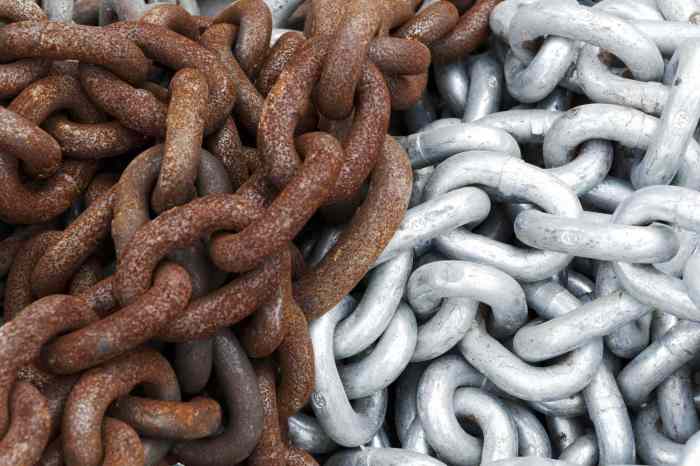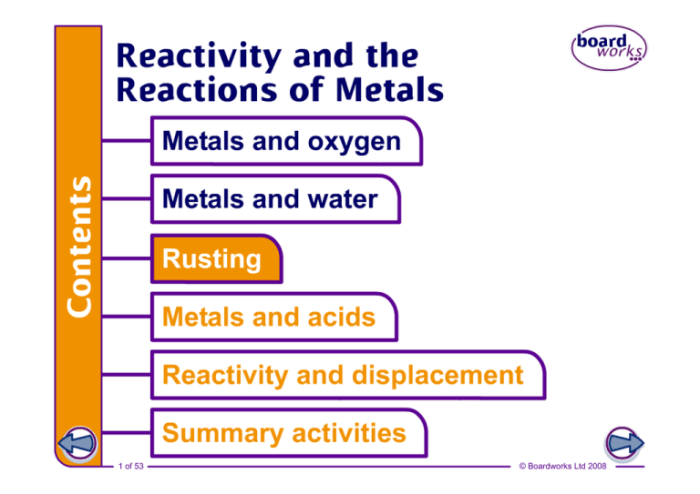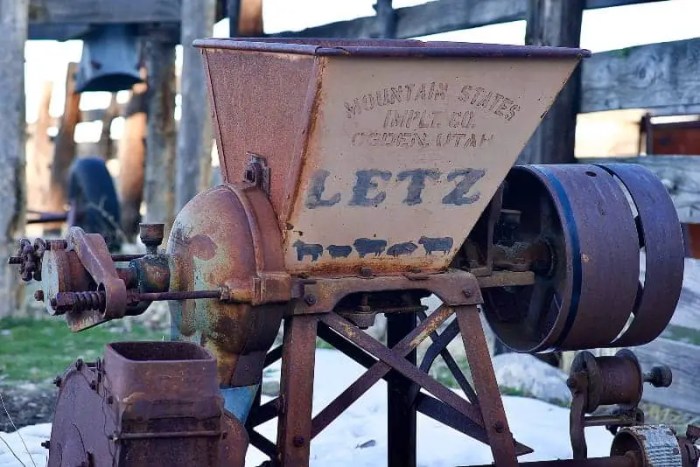The relentless corrosion of steel, a ubiquitous material in our built environment, poses significant challenges to infrastructure longevity and safety. Investigating ways to slow down the rusting of steel is paramount, driving research and innovation towards effective and sustainable solutions.
This article delves into the causes, mechanisms, and methods for mitigating steel rusting. By exploring protective coatings, cathodic protection, and corrosion inhibitors, we provide a comprehensive understanding of rust prevention strategies. We also emphasize the importance of proper surface preparation, application techniques, and ongoing maintenance to ensure long-lasting protection.
Causes of Steel Rusting: Investigating Ways To Slow Down The Rusting Of Steel

Steel rusting, or corrosion, is an electrochemical process that occurs when iron atoms in the steel react with oxygen and water in the presence of an electrolyte. The following steps describe the electrochemical process of rust formation:
- Anodic Reaction:Iron atoms in the steel lose electrons and form ferrous ions (Fe2+). This reaction occurs at the anode, which is the site where oxidation takes place.
- Cathodic Reaction:Oxygen molecules in the air react with water and electrons to form hydroxyl ions (OH-) and water. This reaction occurs at the cathode, which is the site where reduction takes place.
- Iron Hydroxide Formation:The ferrous ions (Fe2+) from the anodic reaction combine with the hydroxyl ions (OH-) from the cathodic reaction to form iron hydroxide (Fe(OH)2).
- Rust Formation:Iron hydroxide is further oxidized by oxygen to form ferric hydroxide (Fe(OH)3), which is the reddish-brown substance we know as rust.
Several environmental factors contribute to the rate of steel rusting, including:
- Moisture:Water is necessary for the electrochemical process of rust formation to occur.
- Oxygen:Oxygen is the other essential element for rusting to take place.
- Temperature:Higher temperatures accelerate the rate of rusting.
- Surface Defects and Impurities:Scratches, dents, and other surface defects can provide entry points for moisture and oxygen, leading to accelerated rusting. Impurities in the steel, such as carbon and sulfur, can also make it more susceptible to corrosion.
Methods for Slowing Down Rusting
Several methods can be used to slow down the rusting process of steel, including:
Protective Coatings
Protective coatings, such as paints, sealants, and galvanization, create a barrier between the steel surface and the environment, preventing moisture and oxygen from reaching the metal. Paints and sealants are applied as liquid coatings that dry to form a protective film.
Galvanization involves coating the steel with a layer of zinc, which acts as a sacrificial anode, protecting the steel from corrosion.
Cathodic Protection
Cathodic protection involves connecting the steel to a more active metal, such as zinc or aluminum, which acts as a sacrificial anode. The sacrificial anode corrodes instead of the steel, protecting it from rusting.
Corrosion Inhibitors
Corrosion inhibitors are chemical compounds that can be added to the environment to slow down the rate of rusting. They work by forming a protective layer on the steel surface or by interfering with the electrochemical process of corrosion.
Selection of Rust Prevention Methods
The choice of the most appropriate rust prevention method depends on several factors, including:
- Cost:The cost of the rust prevention method should be considered, including the initial investment and ongoing maintenance costs.
- Durability:The durability of the rust prevention method should be considered, especially in harsh environments.
- Environmental Impact:The environmental impact of the rust prevention method should be considered, particularly for methods that involve the use of toxic chemicals.
Proper surface preparation and application techniques are essential for effective rust prevention. The steel surface should be cleaned and free of any dirt, grease, or other contaminants before applying any protective coatings or treatments.
Monitoring and Maintenance
Regular inspections are crucial for identifying and addressing rust issues early on. This allows for prompt repairs and maintenance, preventing further corrosion and extending the life of the steel structure.
Maintenance procedures, such as cleaning, repainting, and touch-ups, are essential for prolonging the life of steel structures. Cleaning removes dirt, debris, and other contaminants that can promote rusting. Repainting and touch-ups repair damaged or worn-out protective coatings, ensuring continued protection against corrosion.
Future Research and Development, Investigating ways to slow down the rusting of steel
Ongoing research and development efforts aim to improve rust prevention technologies and explore new solutions.
- Self-Healing Coatings:Self-healing coatings can automatically repair damage to their protective layer, providing long-term protection against corrosion.
- Bio-Inspired Solutions:Bio-inspired solutions draw inspiration from nature to develop new rust prevention methods. For example, some researchers are exploring the use of rust-resistant bacteria to protect steel.
Question Bank
What are the primary causes of steel rusting?
Steel rusting is an electrochemical process primarily driven by the presence of moisture, oxygen, and impurities on the steel surface. These factors facilitate the formation of iron oxides, commonly known as rust.
How can protective coatings help prevent steel rusting?
Protective coatings, such as paints, sealants, and galvanization, provide a physical barrier between the steel surface and the corrosive environment. They prevent moisture and oxygen from reaching the steel, effectively slowing down the rusting process.
What is the principle behind cathodic protection in rust prevention?
Cathodic protection involves connecting the steel structure to a more reactive metal, known as a sacrificial anode. This sacrificial anode corrodes instead of the steel, protecting it from rusting.


